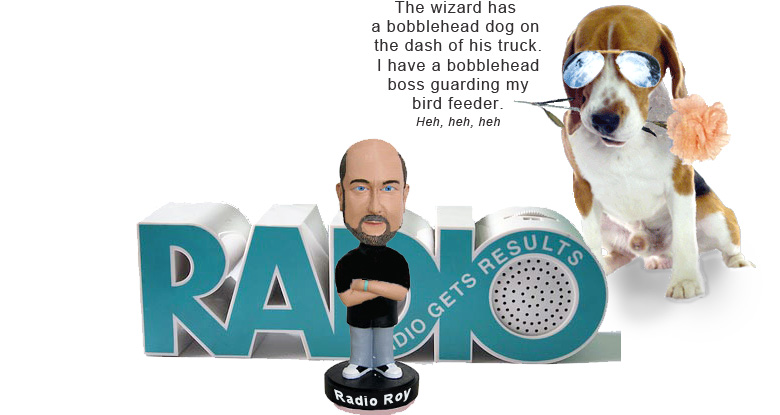I’m experimenting with radio in a way that, for me, is new and different.
Many of those who understand what I’m doing won’t agree with the fundamental premise of my experiment. But that’s not what worries me.
I’m concerned about those who will agree and then attempt it – and fail. I believe they’ll fail because they won’t do it right.
Here’s what’s happening: I’m airing a 5-second ad every hour, 24 hours a day, for 365 days, on each station in a broadcast group in a major city. The result will be 51% reach (18+) with a weekly frequency of 10.4. This means that 51% of the total population in that region will hear one of my ads an average of 10.4 times each week, 52 weeks in a row.
That’s right. One 5-second ad per hour, 24 hours a day, on each station in the broadcast group.
You can run, but you can’t hide.
Here’s why I fear people who attempt this experiment will likely screw it up:
- They’ll buy too little frequency.
“Well, I think a spot an hour is overkill, so I’m just going to buy a 5-frequency instead of a 10+ frequency each week.” - They’ll rotate too few ads.
I’ll be producing 12 new 5-second ads every 6 weeks. Consequently, even though I have a 10.4 frequency each week, the typical listener is likely to hear 10 different ads, one time each. - Their ads won’t say anything worth remembering.
The key to success is to make a different, memorable statement in each 5-second ad. You can then open, or close, each ad with a single word that identifies the company. Only one or two ads in every series of twelve will feature the contact info of the company.
Here’s what I like about this plan:
- Reach is double what I used to get for the same money.
- Frequency is triple what I used to get for the same money.
- With a 10.4 weekly frequency, I can safely expect a listener to unconsciously “connect and combine” each of my brandable chunks, nuggets and factoids to create a coherent mental image much bigger than the information found in a single ad. In fact, I expect that within a few months a large percentage of that city will be able to recite meaningful amounts of information about my client.
- The 5-second format – combined with 12 new ads in rotation every 6 weeks – will allow me to dodge the audience burn-out bullet.
What will happen if my experiment proves successful?
- I’ll finally have a way to help advertisers with small budgets in big cities.
Give me a schedule of 1 spot per hour, 7 days a week, 52 weeks a year on the smallest station in town and it won’t be long before my client is on a second station, then a third. - Get enough advertisers to do this and Radio will become happy again.
Even if you believe that “a unit is a unit, no matter the length,” you can’t argue with the fact that airing twenty-four 5-second ads would mean only a 2-minute commercial load per hour. This would mean that a listener tuning in to your station would be greeted by a commercial – instead of music – just once in every 30 visits to your dial position, compared to the current 1 in 4. - Even if radio stations began airing 36 ads per hour – more than double the number they’re currently airing – I’m fairly certain that listeners would be delighted with just 3 minutes of ads per hour.
- A radio station with 4 commercial breaks of NINE, 5-second ads each hour would have rollicking, rock-and-roll commercial breaks of just 45 seconds each and I’m convinced listeners would retain a higher percentage of those messages.
The weakness of this plan is that so few people know how to write attention-getting, memorable 5-second ads.
But don’t worry. We’re putting together a class.
Indy says “Hi,” by the way.
He just showed me what he put in this week’s rabbit hole for you.
You’re going to like it.
Roy H. Williams

Have you ever built a company and then sold it to Bill Gates?
She has. And now she – with the incomparable Dr. Richard D. Grant – is going to teach you How to Sell More and Feel Good About It. March 29-30. You’ll go home a different person.

Dr. Ryan Jones wants to make it easier for you to learn boring, but necessary course material. Dr. Jones uses storytelling, originality and surprise, combined with memorable visual images – to teach tedious details of biology, pharmacy, and social science. Listen and learn as Roving Reporter Rotbart tests the theories of Dr. Jones by choosing ten randomly selected objects, then committing those objects to long-term memory by creating a story based on them. The weird and wonderful is waiting for you at MondayMorningRadio.com
